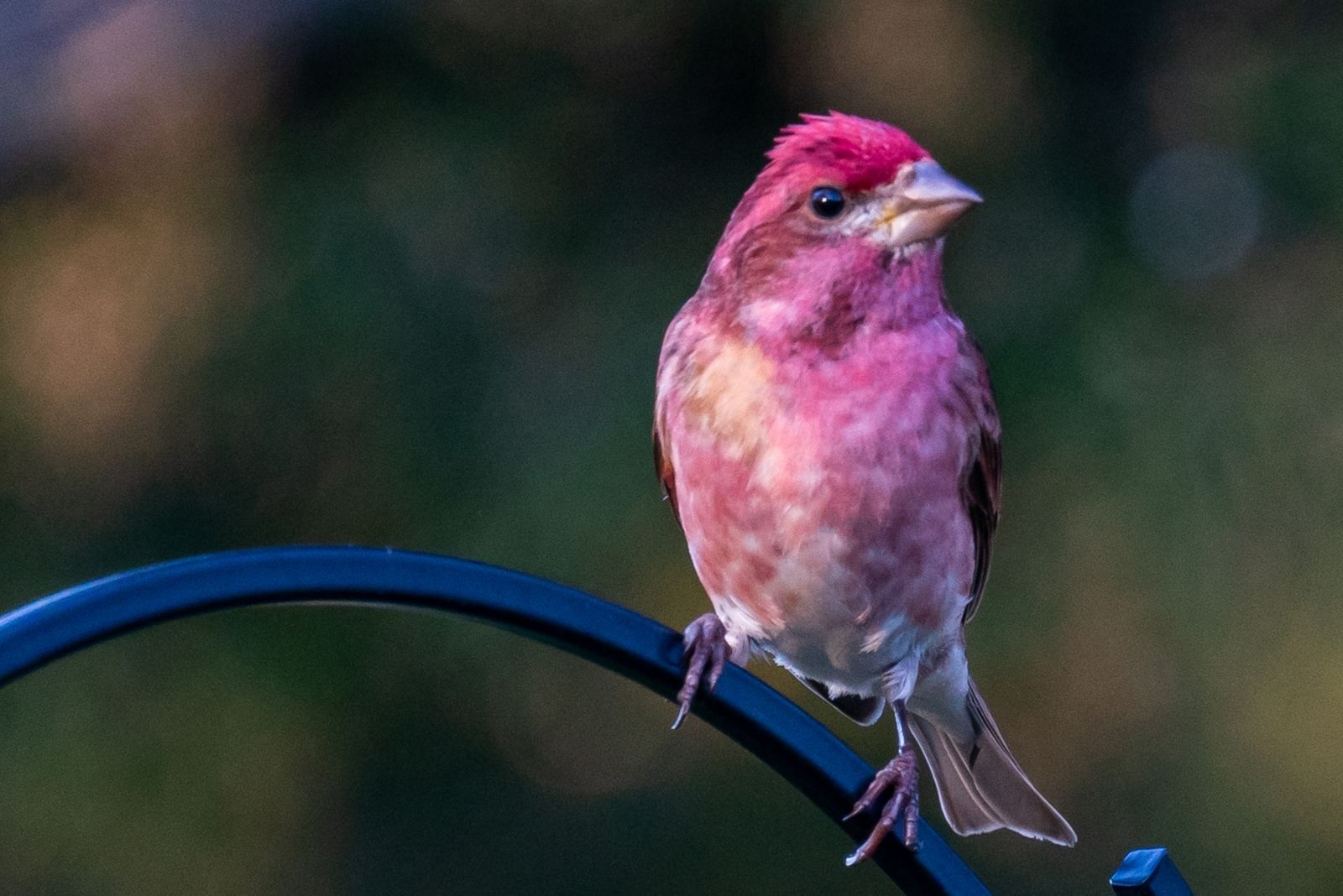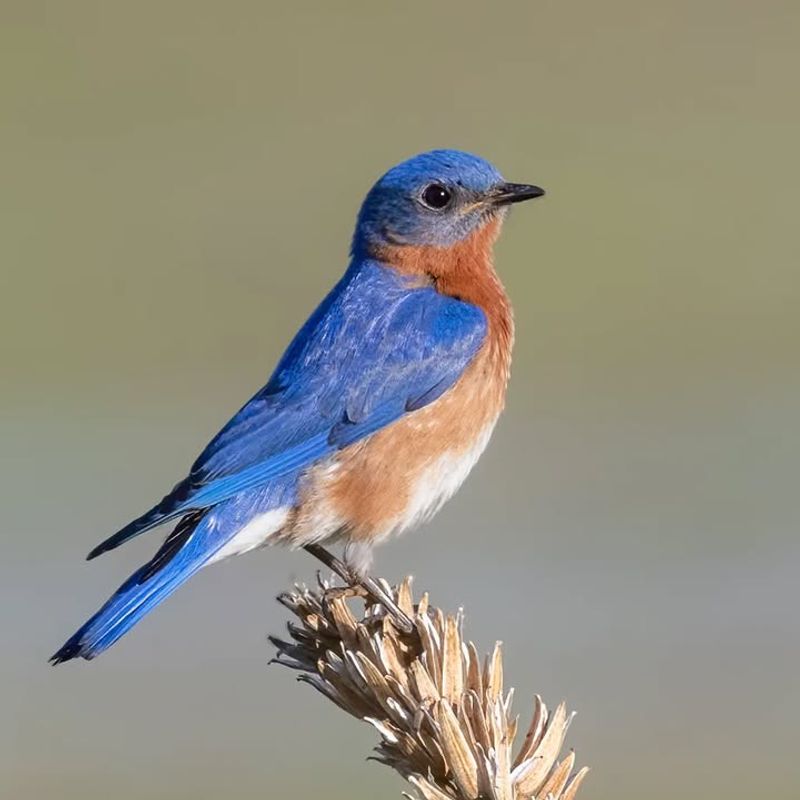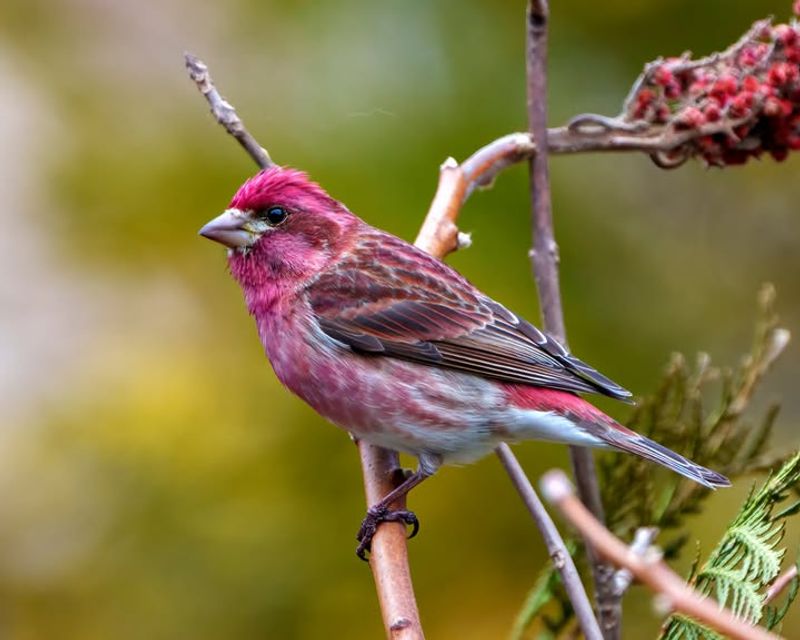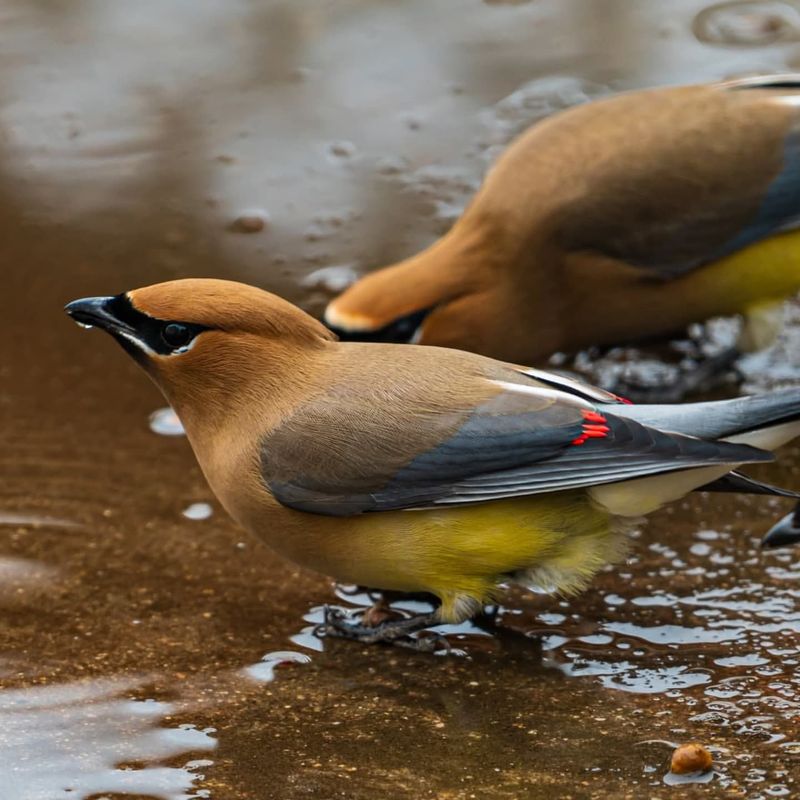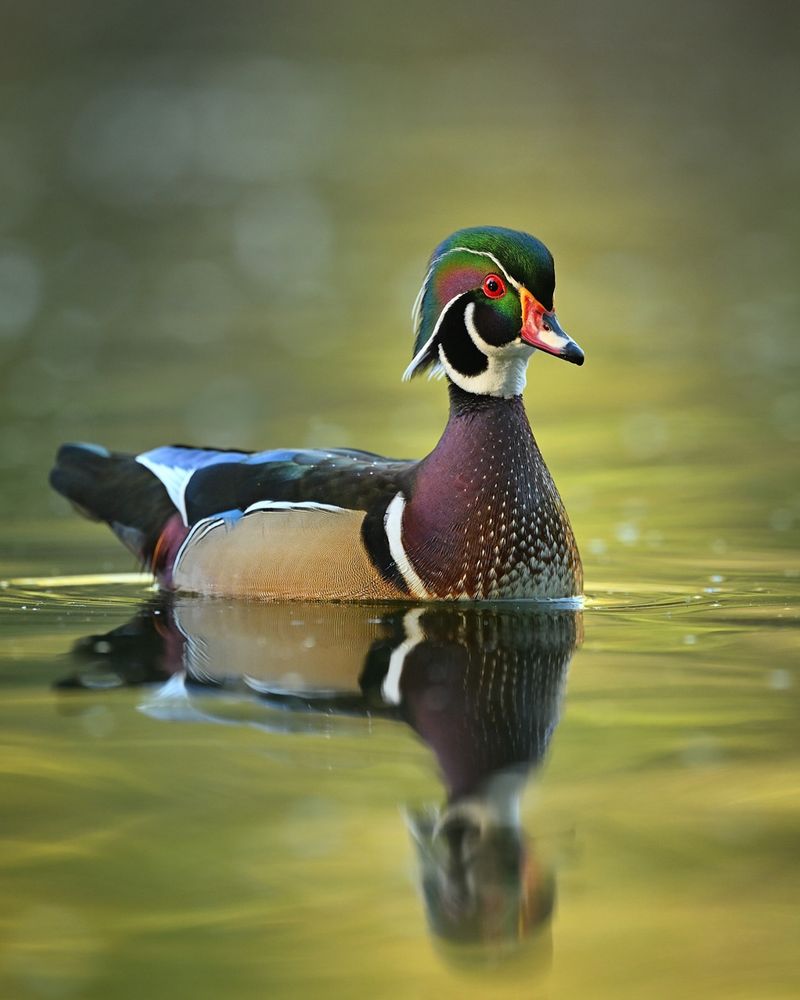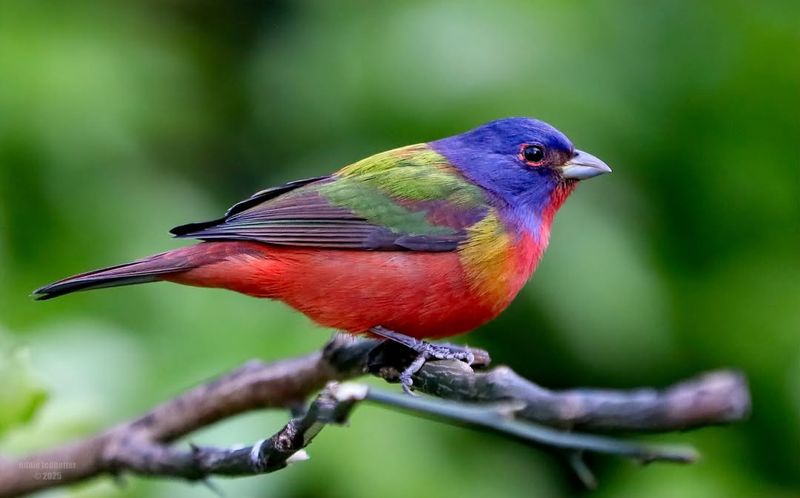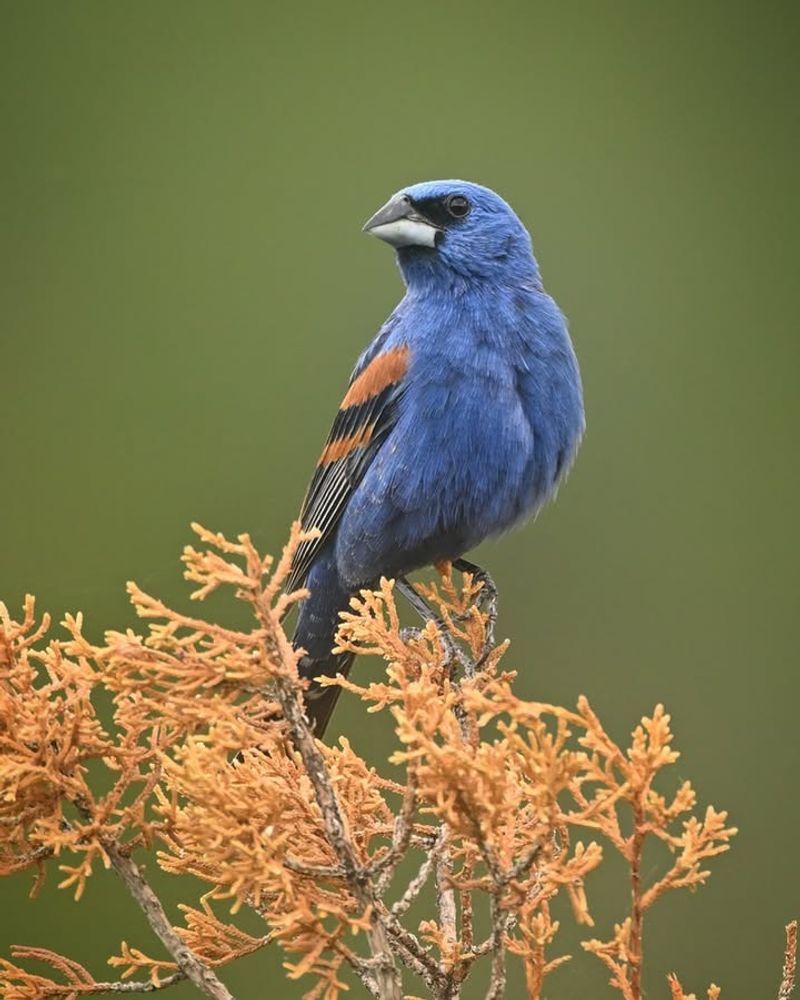Pennsylvania backyards are becoming hotspots for some of nature’s most stunning surprises. Bird watchers across the state have been reporting sightings of feathered visitors displaying colors you wouldn’t expect to see outside a tropical rainforest.
From brilliant blues to fiery oranges, these rare-colored birds are turning ordinary mornings into extraordinary wildlife experiences that homeowners won’t soon forget.
1. Indigo Bunting
Male indigo buntings look like they’ve been dipped in electric blue paint from head to tail. During breeding season, their feathers catch sunlight and create an almost neon glow that stops people in their tracks.
Surprisingly, their feathers don’t actually contain blue pigment. Light refracts through their feather structure to create that stunning color, similar to how a prism works.
You’ll spot them near woodland edges and brushy areas, especially during spring migration. Their cheerful songs match their vibrant appearance perfectly.
2. Baltimore Oriole
With a heart full of song and feathers colored like Halloween candy, Baltimore orioles bring tropical flair to Pennsylvania yards. Males sport brilliant orange bodies contrasted with jet-black heads and wings, creating a striking combination.
They arrive in late April and immediately start searching for high branches to build their hanging nest pouches. Offering orange slices or grape jelly can attract these beauties to your feeder.
Their liquid, flute-like whistles echo through neighborhoods all summer long.
3. Scarlet Tanager
Imagine spotting a bird that looks like a living flame moving through green forest canopy. Male scarlet tanagers wear fire-engine red plumage with contrasting coal-black wings, making them unforgettable.
Despite their bold coloring, they’re surprisingly hard to spot high in oak trees where they hunt insects. Listen for their hoarse, robin-like song to locate them overhead.
Females wear yellow-green feathers, providing camouflage while nesting. Come fall, males molt into greenish plumage before migrating south.
4. Rose-breasted Grosbeak
Picture a tuxedo-wearing gentleman with a vibrant rose-colored tie, and you’ve got the rose-breasted grosbeak. Males display dramatic black-and-white patterns with a brilliant triangular splash of deep pink on their chest.
Their thick, cone-shaped beaks crack sunflower seeds effortlessly at feeders. Both males and females sing beautifully, sounding like robins who took vocal lessons.
Watch for them during spring migration when they stop to refuel in Pennsylvania yards before heading to breeding grounds.
5. Eastern Bluebird
Eastern bluebirds wear the colors of sunrise on their bodies. Their backs shimmer with sky-blue feathers while their breasts glow with warm rusty-orange tones, creating nature’s perfect color combination.
Once declining due to habitat loss, these cavity nesters have rebounded thanks to nest box programs. Installing a bluebird house in your yard might attract a breeding pair.
They hunt insects from perches, dropping down to snatch prey from grass. Their gentle warbling calls sound like contentment itself.
6. Purple Finch
Don’t let the name fool you—purple finches actually wear gorgeous raspberry-red plumage that looks like someone dipped them in berry juice. Males show this rich coloring across their head, breast, and back.
They’re often confused with house finches, but purple finches have more extensive red coloring and stockier builds. Their cheerful, warbling songs brighten winter days when they visit feeders.
Offering nyjer seeds and black oil sunflower seeds can entice these crimson beauties to stick around your property.
7. Cedar Waxwing
Sleek as silk and dressed in soft tan and yellow tones, cedar waxwings look like they belong in an art gallery. Their most unusual feature? Bright red waxy tips on their wing feathers that resemble drops of sealing wax.
These social birds travel in flocks, descending on berry bushes and fruit trees like feathered party guests. They pass berries to each other in adorable courtship rituals.
A yellow band across their tail tips completes their sophisticated appearance, making them Pennsylvania’s most elegant visitors.
8. American Goldfinch
When male goldfinches molt into breeding plumage, they transform into flying sunshine. Their bodies turn brilliant canary-yellow with jet-black caps and wings, creating a color combination that’s impossible to miss.
They’re one of the latest nesters among North American birds, waiting until late summer when thistles provide both food and nesting material. Their bouncy flight pattern and cheerful calls announce their presence.
Nyjer feeders will keep these acrobatic beauties visiting your yard year-round, though winter brings more subdued olive tones.
9. Wood Duck
If birds held beauty contests, male wood ducks would win every time. Their plumage features an almost ridiculous array of colors: iridescent green and purple head, chestnut breast, golden sides, and intricate white patterns.
They nest in tree cavities near wooded ponds and streams throughout Pennsylvania. Their sharp claws help them perch on branches, unlike most ducks.
Females wear more subdued gray-brown tones but have distinctive white eye rings. Spotting a drake in full breeding plumage feels like discovering hidden treasure.
10. Painted Bunting
Talk about rare—painted buntings typically stick to southern states, making Pennsylvania sightings truly exceptional. Males look like someone grabbed every crayon in the box: blue head, lime-green back, and fire-red underparts.
Climate changes and shifting migration patterns occasionally bring these tropical-looking birds northward. When one appears at a Pennsylvania feeder, word spreads quickly among local birding communities.
They prefer dense, shrubby areas and ground feeding. Spotting one here counts as a once-in-a-lifetime experience for most homeowners.
11. Orchard Oriole
Smaller and darker than their Baltimore cousins, orchard orioles sport deep chestnut-red plumage instead of bright orange. Males combine this rich brick-red color with black heads, backs, and wings for a sophisticated look.
True to their name, they favor orchards, parks, and shade trees where they hunt insects and sip nectar. Their rapid, jumbled songs sound hurried compared to Baltimore orioles’ leisurely whistles.
They’re among the first fall migrants, departing Pennsylvania by late July. Catch them during their brief spring and early summer visit.
12. Blue Grosbeak
Deep cobalt-blue feathers make male blue grosbeaks look like they borrowed color from a midnight sky. Rusty wing bars and a massive silver bill complete their striking appearance.
These southern birds occasionally wander into Pennsylvania during breeding season, preferring overgrown fields and brushy edges. They’re shyer than indigo buntings despite their bold coloring.
Spotting one requires patience and sharp eyes since they often stay hidden in dense vegetation. Their buzzy, warbling songs help reveal their presence when visual identification proves difficult.

